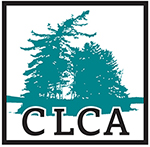 April and May Wildflowers
April and May Wildflowers April and May Wildflowers
April and May Wildflowers |
||
| Home | April-May | June | July | August-September | ||
| Photo (Click on image to see larger format image) | Description | Date (2015 season) |
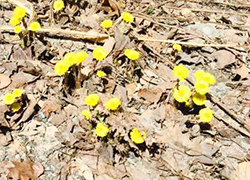 |
Coltsfoot: found along the roads. The name is based on the similarity of the shape of the leaf to a horse's hoof. This is a non-native plant introduced from Eurasia. In some places this is considered an invasive species. Non-native Reference: Paul Smith's, Wildflowers of the Adirondacks. Photo: AF |
April 29 |
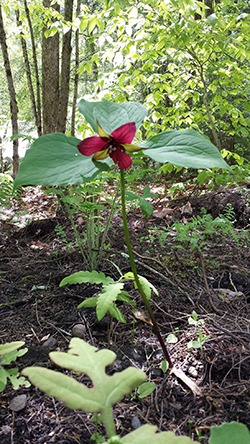 |
Purple Trillium: also known as Red Trillium, Wake-robin, or Stinking Benjamin or Stinkpot. The latter two names is derived from their smell which is like rotting flesh. Carrion flies that feed on the thawing flesh of dead animals are attracted to Trillium and are crucial in their pollination. This is a native plant to the east and north-east. Trilliums appear before the forest canopy comes out in full. They take advantage of early spring sun. Native Reference: Paul Smith's; Lady Bird Johnson Wildflower Center; Wildflowers of the Adirondacks. Photos: DC |
May 4 |
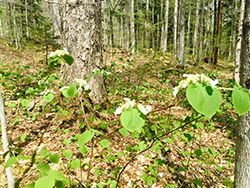 |
Hobblebush: a native deciduous shrub. In early spring the plant produces clusters of white flowers. By August, the plant produces red berries. The name is derived from the fact that the low spreading branches of the plant can easily trip or hobble an unsuspecting hiker. Native Americans used hobblebush for a number of medicinal purposes. Native Reference: Paul Smith's; Lady Bird Johnson Wildflower Center; Shrubs of the Adirondacks Photos: AF and DC |
May 9 |
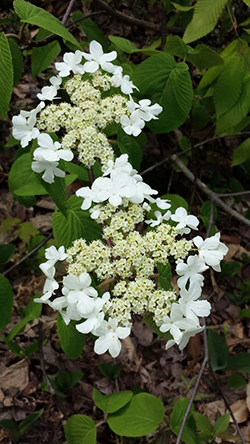 |
||
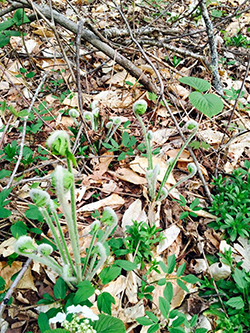 |
Fiddlehead Ferns: are the furled fronds of a young fern. These are a popular spring vegetable. The name is derived from the similarity of the plant to the scroll ornamentation of a string instrument like a fiddle. Reference: Wikipedia. Photo: AF |
May 9 |
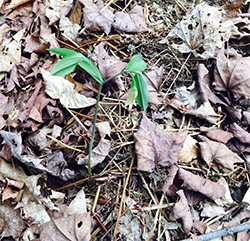 |
Wild Oats: the narrow bell like shape of this pale yellow flower that hangs from a drooping branch has given this plant the alternative name of Little Merrybells. Sessile Bellwort is another common name. References: McGrath, p.77; Chapman et al., p. 90.
Photo: AF |
May 9 |
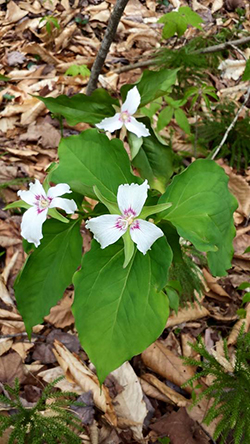 |
Painted Trillium: also known as Painted Lady. Each flower has three lance shaped white petals and purplish stripe in its center. Each plant will have three, blue green leaves. In late summer or early fall, the plant will produce bright red fruit. Native References: Paul Smith's; Lady Bird Johnson Wildflower Center; Wildflowers of the Adirondacks. Photo: DC |
May 15 |
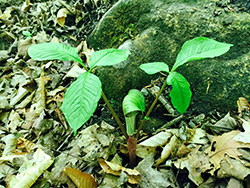 |
Jack in the Pulpit: The most characteristic element is the upright, curved spathe ("the Pulpit") that encloses a club shaped spadix ("Jack"). The plant has large trifoliate leaves. By the end of the summer red, clustered berries will appear on the spadix. Wikipedia; Lady Bird Wlidflower Center Photo: AF, CG |
May 17 |
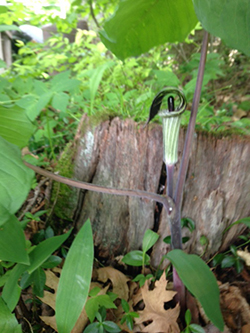 |
||
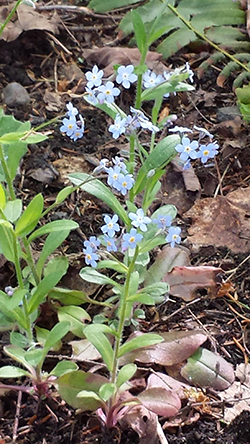 |
Forget me nots: Introduced from Europe, this species is naturalized now around lakes, ponds, and streams. The Forget me not appears in European folklore and legend. Reference: Wikipedia Photo: DC and LL. |
May 17 |
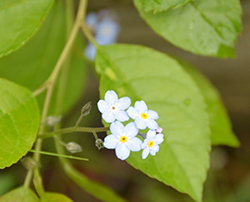 |
||
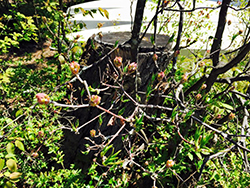 |
Pinxter buds are about to blossom. Photo: AF |
May 17 |
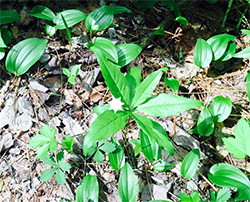 |
Starflower: Also known as the Northern Starflower and Maystar. It is a woodland perennial, especially found in northern New York. Native References: Paul Smith's; Lady Bird Johnson Wildflower Center, Wildflowers of the Adirondacks. Photo: AF |
May 18 |
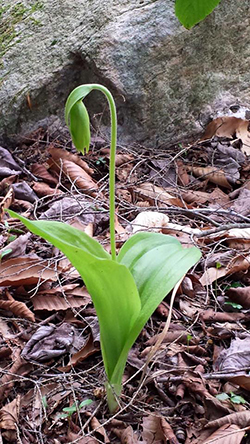 |
Pink Lady's Slipper or Mocassin Flower: about to bloom. Native Photo: DC |
May 18 |
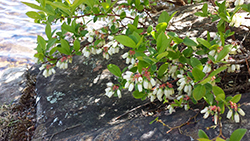 |
Velvet-Leaf Blueberry: clusters of white, waxy, tubular flowers appear on this shrub found in moist soils like swamps. Reference: Chapman et al., p.36 Photo: DC |
May 19 |
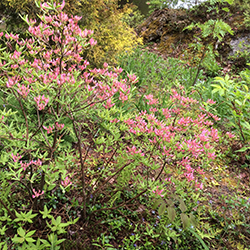 |
Pinxter (in bloom): this azalea stands out in late May and early June with its abundance of sweet smelling pink flowers. Reference: Lady Bird Johnson Wildflower Center. Photo: SM and DC |
May 20 |
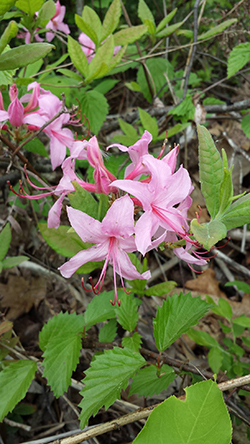 |
||
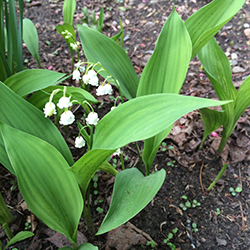 |
Lily of the Valley: the plant bears dainty, white bell-shaped flowers with a strong, sweet perfume. Given the right conditions this plant can be an aggressive groundcover. All parts of this plant are highly poisonous. Reference: Wikipedia; Cornell Growing Guide. Photo: SM & AF |
May 20 |
find larger image |
||
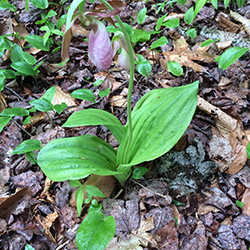 |
Pink Lady's Slipper: also called Moccasin Flower or Stemless Orchid, the Lady's Slipper is a member of the orchid family. Grows in acid woods, oak and pine forests and bogs. The plant has two opposite basal leaves with prominent parallel veins and a leafless stalk bearing the distinctive pink flower. The plant has difficulty propagating and should not be picked. The plant takes many years to develop from seed to mature plant which can live to twenty years or more. Native Reference: Paul Smith's; Lady Bird Johnson Wildflower Center, Wildflowers of the Adirondacks. Photos: SM and LL |
May 20 |
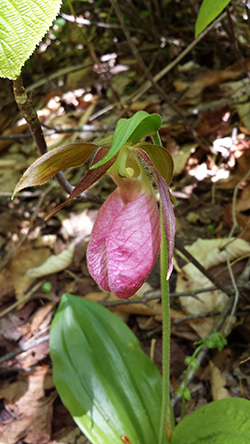 |
||
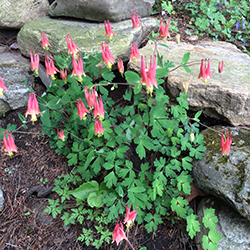 |
Wild Columbine: a native Adirondack wildflower is a member of the buttercup family, the plant is characterized by its distinctive, drooping red and yellow flowers. Distinctive of the plant is its three, lobed leaves.The genus name, Aqulegia, is derived from the Latin word aquila, or eagle. The flower's backward pointing tubes have a shape similar to that of the talons of an eagle. Native Reference: Paul Smith's; Lady Bird Johnson Wildflower Center; Wildflowers of the Adirondacks.
Photos: SM |
May 20 |
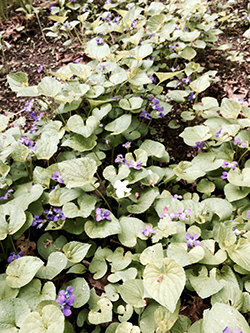 |
Violets:
Photos: SM & LL |
May 20 |
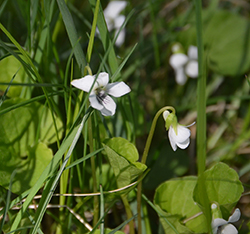 |
||
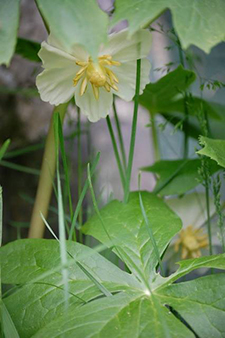 |
Mayapple: also known as Indian Apple or Wild mandrake. The plant is distinctive for its 2 leaves and single flower. The large, twin leaves are umbrella-like. The single, nodding flower has 6-9 white petals. The name is derived from similarity of the flower to apple blossoms. Reference: Lady Bird Johnson Wildflower Center. Photos: RC& DC |
May 20 |
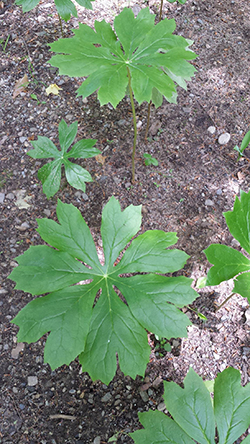 |
||
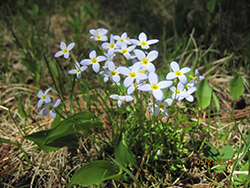 |
Bluets: Also known as Quaker Ladies, these delicate perennial plants grow in large tufts and can cover large areas. The pale blue flowers have a yellow center. Bluets are known to bloom in early May at the lake. Reference: Lady Bird Johnson Wildflower Center. Photo: LL |
May 21 |
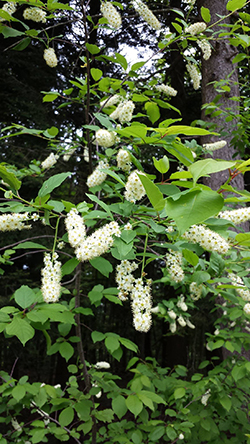 |
Chokecherry: Photo: DC |
|
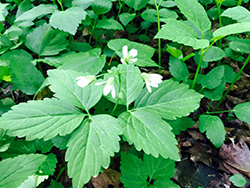 |
Two-Leaved Toothwort: also known as the Crinkleroot and Pepperwort, this plant is found in rich moist woods. A cluster of white or light pink, four petaled blossoms appear at the end of a stem rising above the leaves. Reference: Lady Bird Johnson Wildflower Center;
Photo: AF |
May 23 |
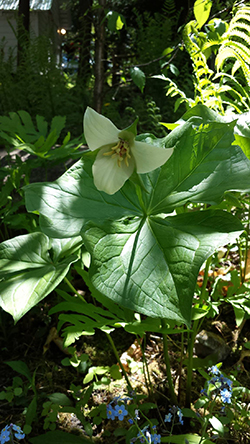 |
White or Large Flowered Trillium: grows in rich moist woodlands. The usually white flower is formed by three large petals. These petals turn pink when the flower matures. Reference: Lady Bird Johnson Wildflower Center.
Photo: DC |
May 24 |
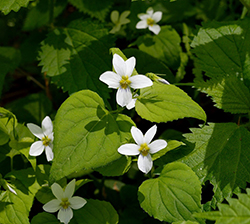 |
Canada Violets:
Photo: MA |
May 24 |
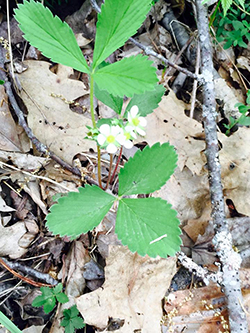 |
Wild Strawberry: also known as the Virginia Strawberry. This perennial has stalk which at first bears a white, five-petaled flower that will become a tasty wild strawberry.
References: Lady Bird Johnson Wildflower Center:
Photo: AF |
May 24 |
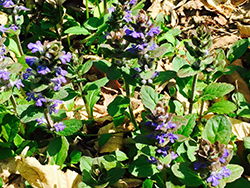 |
Ajuga reptans: commonly known as bugleweed or carpetweed, is a dense, rapidly spreading, mat-forming ground cover. This is a non-indigenous plant that is native to Europe, northern Africa, and southwestern Asia. It is used as a ground cover in areas where lawns are difficult to grow. References: Missouri Botanical Garden; Wikipedia. Photo: AF |
May 24 |
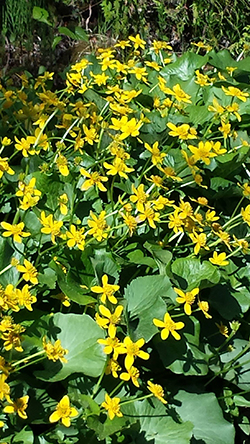 |
Marsh Marigolds: this perennial with heart shaped leaves produces shiny yellow flowers in showy spring display. The plant is native to marshes, swamps, and the margins of ponds and streams. References: Lady Bird Johnson Wildflower Center; Missouri Botanical Garden. Photo: DC |
May 24 |
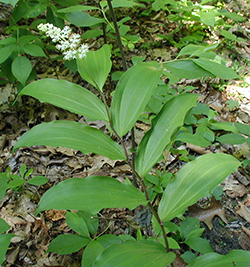 |
False Solomon's Seal: also known as Feathery False Lily of the Valley, False Spikenard, and Solomon's Plume. False Solomon's Seal is distinguished with its small, white blossoms at the tip of the single arching stem. Elipitical leaves, alternate along the central stem. The spotted berries that develop from the flower clusters turn a ruby-red in the fall. Reference: Lady Bird Johnson Wildflower Center; wildeherb.com Photo: AF |
May 24 |
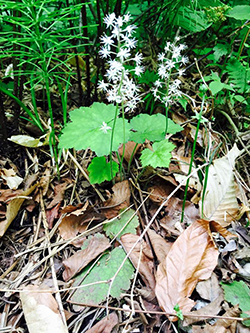 |
Foamflower: also known as Heartleaf Foamflower, this plant bears small, white feathery flowers at the end of a leafless stalk. Native References: Paul Smith's; Lady Bird Johnson's Wildflower Center; Wildflowers of the Adirondacks. Photo: AF |
May 24 |
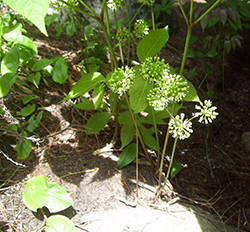 |
Wild Sarsaparilla: also known as False Sarsaparilla, Shot Bush, Small Spikenard, Wild Licorice, and Rabbit Root. In spring, the plant produces tiny greenish white flowers in globe shaped clusters. The flowers later develop into purple-black berries. Its roots can be substituted for true Sarsaparilla to make root beer. Native References: Paul Smith's; Lady Bird Johnson Wildflower Center; Wildflowers of the Adirondacks.
Photo: BM |
May 25 |
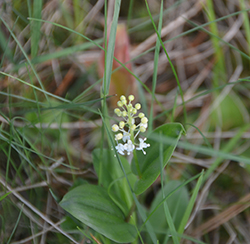 |
Canada Mayflower (Wild Lily of the Valley): also known as the False Lily of the Valley. The plant has two, shiny oval leaves with a central stem with a cluster of small, white flowers. The plant will produce small, pale red berries. Native References: Paul Smith's; Lady Bird Johnson Wildflower Center; Wildflowers of the Adirondacks. Photo: LL |
May 25 |
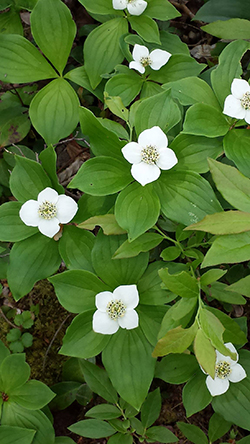 |
Bunchberry: Found in cool moist woods, this plant often forms large colonies. It is also called Ground Dogwood or Dwarf Cornel. Red berries produced by the plant appear in mid to late summer. Native References: Paul Smith's; Lady Bird Johnson Wildflower Center; Wildflowers of the Adirondacks.
Photo: DC |
May 25 |
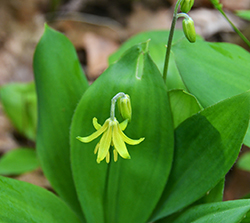 |
Clintonia (Blue-Bead Lily): Clintonia grows in cool moist woods and attracts great numbers of Yellow Swallowtail butterflies. In mid-summer flowers give way to large dark blue berries. Thus the name Bluebead Lily is also used for this plant. The name was given to the plant to honor DeWitt Clinton, a former governor of New York. (Yellow Swallowtail Butterflies were observed 5/25) Native References: Paul Smith's; Lady Bird Johnson Wildflower Center; Wildflowers of the Adirondacks. Photo: LL |
May 25 |
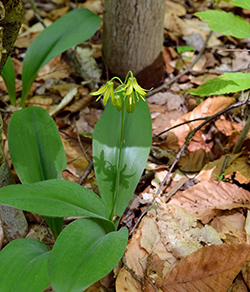 |
||
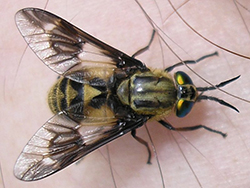 |
Deerflies: They're back! They seem early this year. | May 26 |
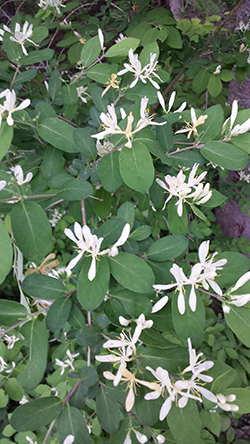 |
Honeysuckle:
Photo: DC. |
May 28 |
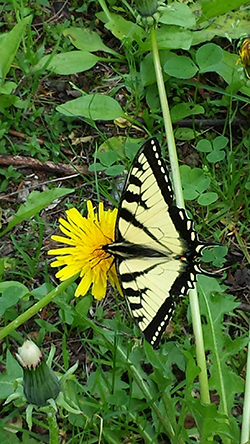 |
A Dandelion with an Eastern Tiger Swallowtail Butterfly. Photo: DC |
May 29 |
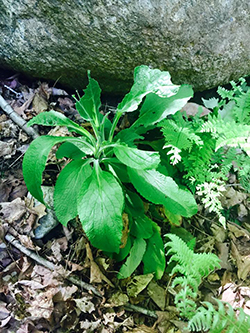 |
Foxglove plant: Photo: AF |
May 29 |
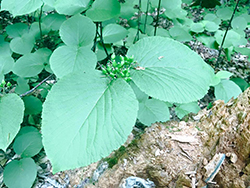 |
Hobblebush Berries have formed. | May 30 |
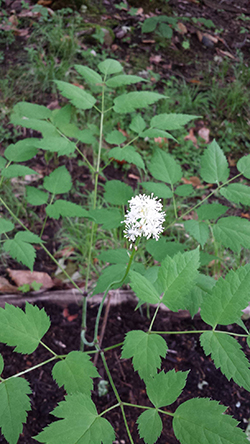 |
White Baneberry: this perennial plant is native to eastern North America. The white flowers are produced in spring. The plant will produce berries that will ripen over the summer and produce its characteristic white berry that give the plant its common name "doll's eyes". Both the berries and the plant are considered poisonous to humans. The berries have cardiogenic toxins which have a sedative effect on the human cardiac muscle. Native References: Wikipedia; Missouri Botanical Garden. Photo: DC |
May 30 |
| Home | April-May | June | July | August-September | ||